By Todd Burgreen
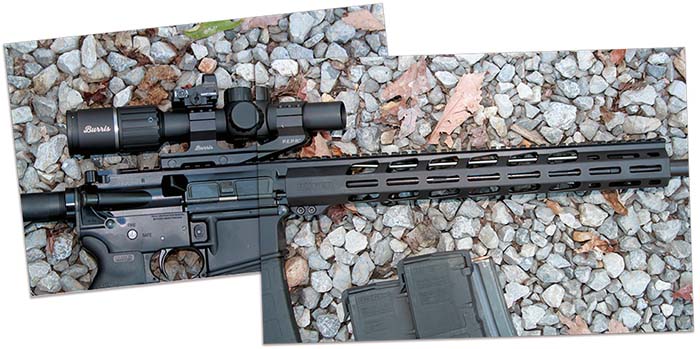
A Credit to the AR Platform
What comes to mind if someone mentions getting a multi-purpose rifle from Ruger? I bet many would consider the Ruger Gunsite Scout or even one of the Ruger Mini-14® or Mini-Thirty® offerings. This neglects the salient fact that the AR is the king of the rifle market here in the US. The AR is surpassing the other US icon—the 1911—in terms of available aftermarket parts and accessories, not to mention the number of different manufacturers and versions available. Ruger has decided to further expand its AR lineup with the AR-556 MPR (multi-purpose rifle).
It is definitely the heyday of the AR platform. Labels have emerged to help distinguish certain AR rifle types. Examples of this would be Recon/Recce, SPR, DMR, MPR, etc. The Recon and SPR ARs are multi-purpose ubiquitous weapons with flat-top upper receivers for easy mounting of optics plus a 16- to 18-inch, free-floated, medium profile barrel with 1:7 or 1:8 twist surrounded by a forend rail system. Each seeks to minimize weight and keep the weapon’s profile sleek for better handling while offering superior accuracy and longer range terminal performance than shorter barreled ARs. These ARs are required to be equally at home in CQB encounters characterized by multiple rounds fired rapidly with distances measured in feet while still offering precision fire out to 350 to 400 yards. It is easy to see how these characteristics could also benefit both personal defense and competition shooters alike.
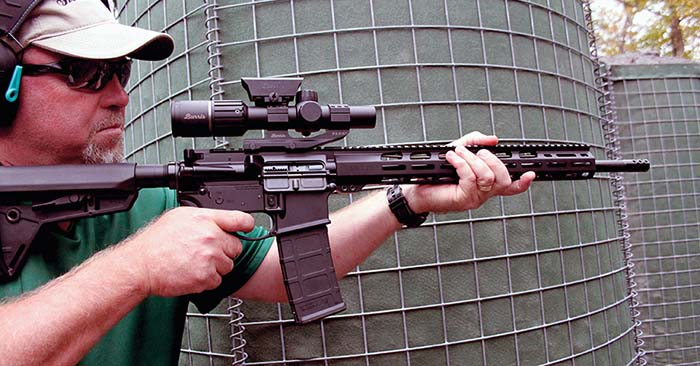
The Ruger name in the same sentence with AR is a further indication of how popular AR rifles are. The Ruger AR-556 MPR represents the latest AR introduced into the US market. ARs can be had in everything from piston-driven varieties, multiple calibers, pistol configurations, flattops and various barrel lengths. The inherent modularity of the AR with its upper and lower receivers is its greatest attribute for adapting to individual preference; whether it is for competition, target shooting, military and law enforcement or personal defense. This same adaptability can also lead individuals astray as to what is desired versus necessary in setting up a rifle. Quad forends festooned with lights, lasers, vertical grips and even night vision devices are not needed in most applications and can even be a detriment to efficient use for most civilian and even law enforcement roles. A lightweight, fast handling rifle is a premium when having to react to a threat. This leads us to Ruger’s entry into the AR field—the AR-556 MPR.
AR-556—What’s the Fuss?
The Ruger MPR is one of the lighter Ruger AR versions weighing in at 6.8 pounds. It features a minimized rail design and fluted barrel that helps to save weight. Not all weapons need rails and an array of accessories to be considered viable. While reliability should never be compromised in terms of cost/performance ratios, other items considered a must for some may not be high priority or worth it for others. KISS (Keep It Simple Stupid) methodology can pay dividends in terms of budget and allowing for concentration on other priorities such as training, for example. Overall, the length of the rifle is 35 to 38.25 inches depending on adjustable buttstock position.
The Ruger AR-556 MPR offers great value for what is included in the $899 MSRP: the Ruger Elite 45 AR-Trigger, a two-stage trigger that offers a 4.5-pound trigger pull; low profile gas block and slim free float rail; a cold hammer forged 16-inch 1:8 barrel with 5R rifling; chrome-plated interior bolt carrier and gas key; M4-style feed ramps; staked gas key; 1/2×28 threaded radial ported muzzle brake; and a full-length rifle gas system.
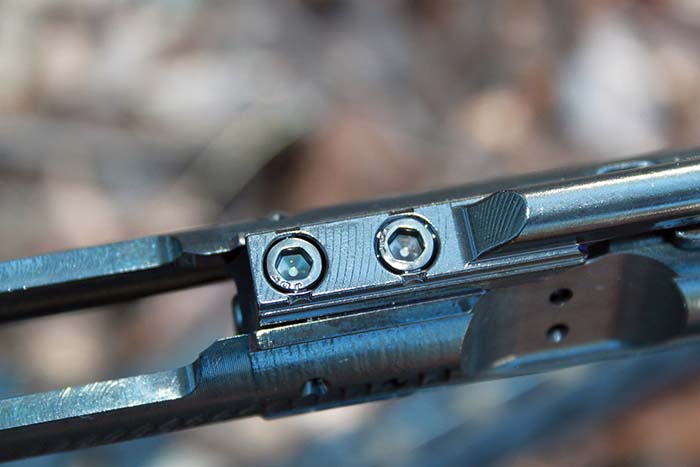
The MPR shows Ruger versatility in satisfying customer needs by not using a full-length quad rail, but instead a 15-inch, free-float slim handrail that allows for Magpul M-LOK attachments. The top of the rifle from the back of receiver to front gas block has a full-length Picatinny rail. The minimalist approach for rails still allows plenty of room for VFG and lights/lasers if determined by an individual as needed.
Iron sights do not arrive with the Ruger MPR. This is not an issue, because a user can purchase a set of flip-ups from various manufacturers. In an effort to maximize the Ruger AR-556 MPR’s potential in terms of accuracy while maintaining flexibility for other tasks/roles, a Burris RT-6 Riflescope 1-6x24mm was mounted via a Burris P.E.P.R. mount. The 1-6x power range offered by the RT-6 solves any conundrum posed by other more limited optic magnification options. Continuing on this theme a Burris FastFire™ 3 red dot sight was placed on top of the RT-6. The Burris combo compliments the Ruger MPR AR well in terms of performance/flexibility offered and price point. For example, if a user does not require the FastFire 3, remove it and find another platform for it.
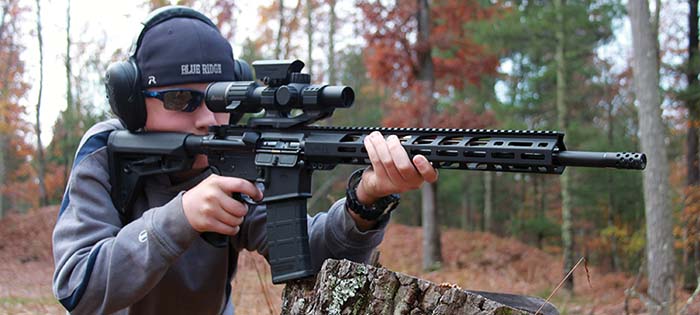
General Testing
Many “maturing” shooters can attest that the single focus plane represented by optics is easier to shoot accurately than coordinating front and rear sights. The 5.56/.223’s flat trajectory aids in making hits out to 250 yards without having to compensate excessively for bullet drop. Roughly speaking, 200-yard zero provides for +2 inches at 100 yards and -7 inches at 300 yards. Ammunition tested with the handy Ruger AR-556 MPR consisted of SIG SAUER 77 grain OTM, Black Hills Hornady 60gr TAP loads and Federal Premium Law Enforcement 62 grain Bonded SP loads. The AR-556 MPR kept all tested loads under 1.5 inches at 100 yards. Three five-shot groups with each ammunition type were fired with group sizes averaged.
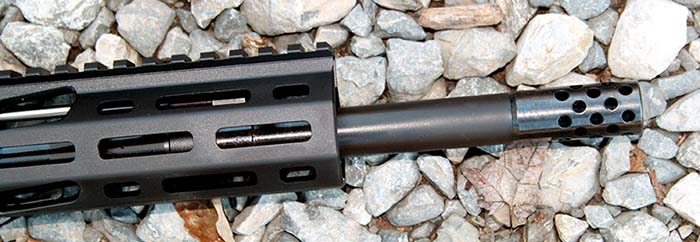
Range testing commenced with a functionality test consisting of dumping multiple magazines at several targets in rapid fashion once sight zeros were verified. Any fighting rifle must be reliable to be worthy of consideration. The rifle-length gas tube allows for a smoother recoil impulse. Readers are urged to fire a carbine-length gas tube AR next to a rifle-length gas tube version. The benefits are obvious.
Green Ops Carbine Class
The culmination of the Ruger AR-556 MPR T&E for this article was participation in a Green Ops Training Carbine course. Rifle/carbine training commenced with a quick confirmation of zeros. Rifle training progressed with baseline drills serving as a warm-up. Rifle reloading methods were covered then segued quickly into transitioning from rifle to handgun. Steel was broke out for other drills fired at 50+ yards that involved firing from different positions.
Team Tactic scenario exercises that involve moving to and from a designated target area using cover while either changing magazines or engaging targets when a partner is reloading provide solid evaluation of a weapon. One gets a good sense of the way a weapon handles and its reliability due to the sum of ammunition expended in short timeframes characteristic of these Team Tactic drills. The Ruger AR-556 MPR handled as expected from a lightweight AR and provided added confidence due to its perfect reliability.
A tactical drill which involved working around barricades and requiring multiple magazine changes while moving between various firing points against a multitude of designated targets served as a solid test for the Ruger MPR. Switching between shoulders was necessary based on firing positions. The rifle training culminated with a scenario involving quick advancement on a target and/or moving side to side waiting on the command to fire, which then required bringing your momentum under control with the sights and trigger working properly to insure hits.
Any doubters as to the utility of a lightweight, properly balanced, fighting rifle should attend a rifle course with a rifle weighing 10 pounds or more laden with accessories and compare it to a rifle configured like the Ruger AR-556 MPR. It is a given which rifle allows its user to perform more dynamically.
Class Take Aways
Some of the “nuggets” I took away from the Green Ops training experience included giving myself a better base platform with my lower body, especially when running the rifle, not overthinking malfunction methods and working better around barricades/obstacles with techniques so simple yet brilliant all the same. The Ruger MPR performed flawlessly and serves as a credit to the AR platform.
Summary
The AR-556 MPR is intended for practitioners who plan on using it for a multitude of roles. If you have ever envisioned a scenario responding to a bump or other commotion and you have to grab a bandolier of magazines and a rifle on the way out of the room or from the trunk of a patrol car, then the AR-556 MPR is more than worthy of consideration. Along these same lines, the Ruger MPR would be equally at home over a prairie dog field or participating in a local 3 Gun Match. Ruger’s thought process was to create a lightweight, simple-to-operate AR. Ruger’s counter-intuitive approach involved maximizing the AR’s effectiveness and potential by simplifying it away from current trends that consist of heavy barrels and full-length, four-sided Picatinny rails adorned with lights, lasers and vertical forward grips.
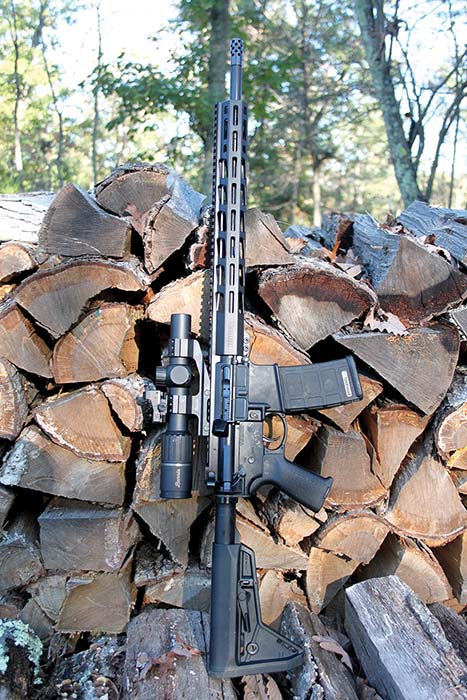
With budgets constantly under pressure, the Ruger AR-556 MPR could be the answer to fulfilling a multitude of roles with a single rifle. This is a positive reflection on the rifle’s accuracy, reliability, handling and ergonomics.
FOR MORE INFORMATION
Sturm, Ruger & Co., Inc.
ruger.com
Black Hills Ammunition
black-hills.com
Federal Cartridge Company
federalpremium.com
Echo Valley Training Center
echovalleytraining.com
Burris Optics
burrisoptics.com
SIG SAUER
sigsauer.com
Green Ops
green-ops.com
Hornady Mfg. Inc.
hornady.com
| This article first appeared in Small Arms Review V23N3 (March 2019) |











